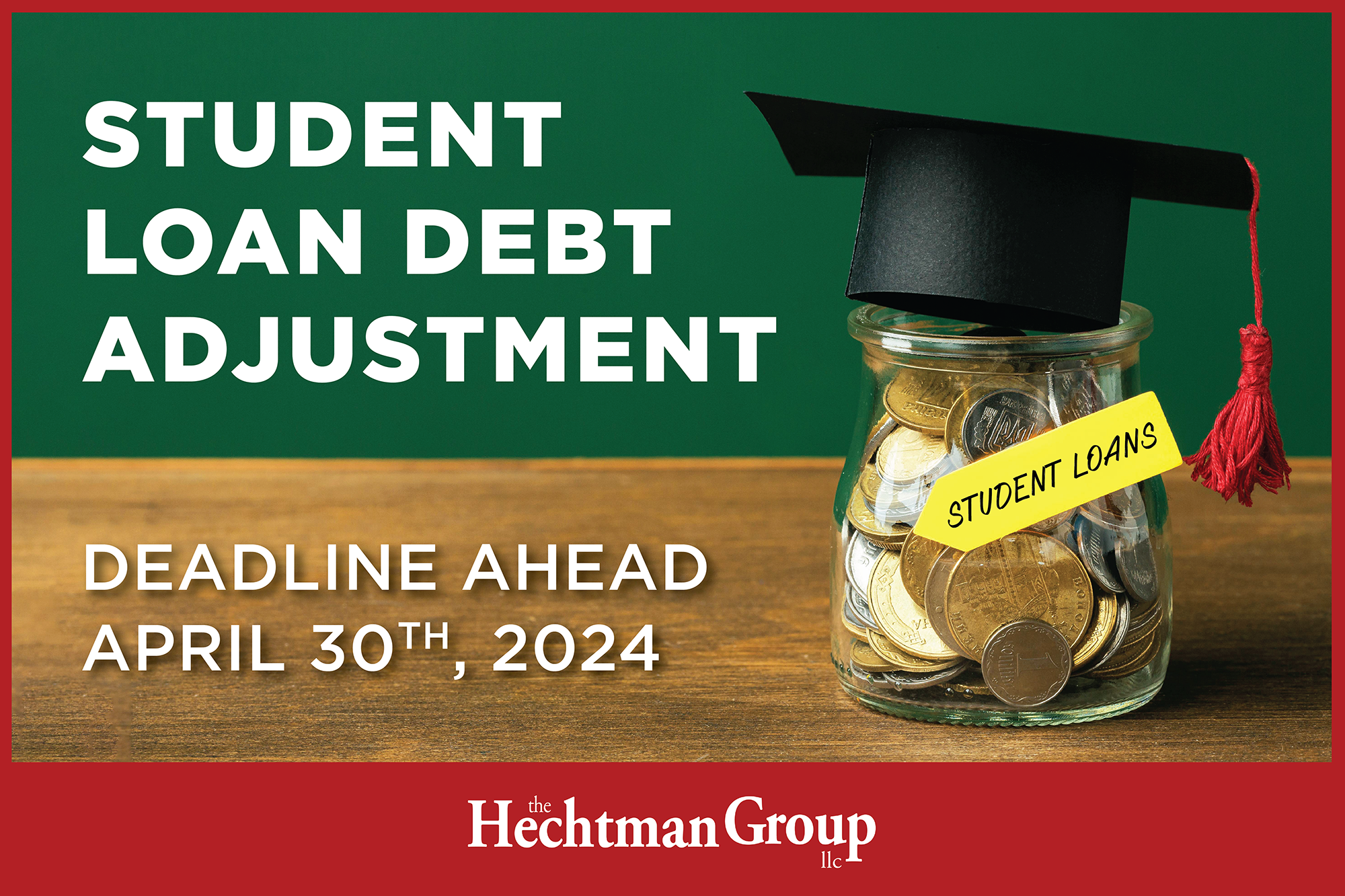
FOR STUDENT LOANS ORIGINATING BEFORE JULY 1, 2010
For millions of individuals with student loans that originated before July 1, 2010, the burden of student loan debt has become a significant financial obstacle. Some lenders are taking advantage of the borrowers, and unfortunately, the government cannot change their behavior. The result is that many borrowers are left to pay loans long-term, often throughout their lives. Now, the Federal Direct Loan program offers borrowers a one-time adjustment credit towards loan forgiveness.
But there is a deadline, and it’s fast approaching.
What exactly is the student loan forgiveness program, how does it operate, and who may be eligible to benefit from its provisions?
A Deadline Date Looms: April 30, 2024
On July 1, 2010, the guaranteed student loan program (loans from private companies guaranteed by the federal government) was replaced with the Federal Direct Loan Program. The Federal Direct Loan Program is a cornerstone of federal student aid in the United States, providing low-interest loans to students and parents to help cover higher education costs. Administered by the U.S. Department of Education, this program offers loans directly to students and their families without involving private lenders as intermediaries.
If your loan was issued before July 1, 2010, it might currently be held by a private company like Navient. However, if you take action before April 30, 2024, it could be converted into a Federal Direct Loan. This conversion could lead to a one-time adjustment in credits toward loan forgiveness.
The Student Debt Relief Landscape
Under President Biden and previous administrations, the student debt relief landscape has included or proposed various programs designed to alleviate the financial strain of educational loans.
- Lump Sum Relief: Given the financial burden of paying off student loans, the Biden Administration planned to forgive $10,000 to $20,000 of many student loans, but the U.S. Supreme Court struck down the proposal.
- Public Service Loan Forgiveness: The PSLF program forgives loans for those working in public service jobs.
- Income-Driven Repayment: IDR plans offer borrowers a way to make more manageable student loan payments based on their earnings.
More recently, on April 8, 2024, the Biden Administration announced a new plan for student debt relief, however it is not covered in this article.
Amidst these programs lie the challenges borrowers face due to private loan servicer failures. These failures often compound borrowers’ difficulties in managing their student loan repayment.
Private Loan Servicer Failures:
IDR plans, or Income-Driven Repayment plans, are designed to offer relief to borrowers struggling with student loan repayment by setting monthly payments based on their income and family size. These plans typically promise forgiveness of any remaining loan balance after 20 or 25 years of repayment, depending on the specific type of loan. However, despite these promises, many borrowers need help realizing this forgiveness. Private loan servicers responsible for managing these loans have often failed to accurately track and apply credits toward forgiveness. In a stark example, the National Consumer Law Center reported in 2021 that only 32 students had received the promised debt cancellation, while a staggering 2 million individuals remained ensnared in debts dating back decades. This discrepancy underscores the challenges and frustrations borrowers face navigating the complexities of student loan repayment and forgiveness.
What is the One-Time Student Loan Adjustment?
To address the failures of the private loan servicers, the U.S. Department of Education announced in April 2022 that it would review the repayment history of each IDR it holds in Federal Direct and Federal Family Education Loan (FFEL) loans and make one-time adjustments to its count toward forgiveness. This adjustment is based on:
- Prior months of repayment
- Certain months of deferment and forbearance
Because the DOE can only adjust loans it holds, borrowers with privately held loans can benefit only if they consolidate into a Federal Direct Loan and apply for an IDR before April 30, 2024.
During this particular period, consolidation does not reset the repayment clock, and even a single loan can be consolidated. The DOE has already adjusted millions of student loans, and hundreds of thousands of those adjustments have resulted in loan forgiveness. While normally debt forgiveness is considered taxable income, the student loan debt that is forgiven between December 31, 2020, and January 1, 2025, is not subject to federal taxation. It is up to the states, however, whether to provide a similar exemption for state income taxes. Applicants should check with their accountants to understand state taxation laws that apply to them.
Consolidate Your Loan Today
Loan consolidation and meeting deadline criteria may sound overwhelming, but there are potential benefits in the end. Fortunately, there are multiple resources to guide you through the process:
To apply for consolidation and IDR, log on to the loan consolidation page of StudentAid.gov at https://studentaid.gov/loan-consolidation
For more information, visit the Federal Student Aid office at https://studentaid.gov/announcements-events/idr-account-adjustment
If you would like to discuss this with The Hechtman Group LLC, contact us today at (847) 256-3100 or info@thehechtmangroup.com.